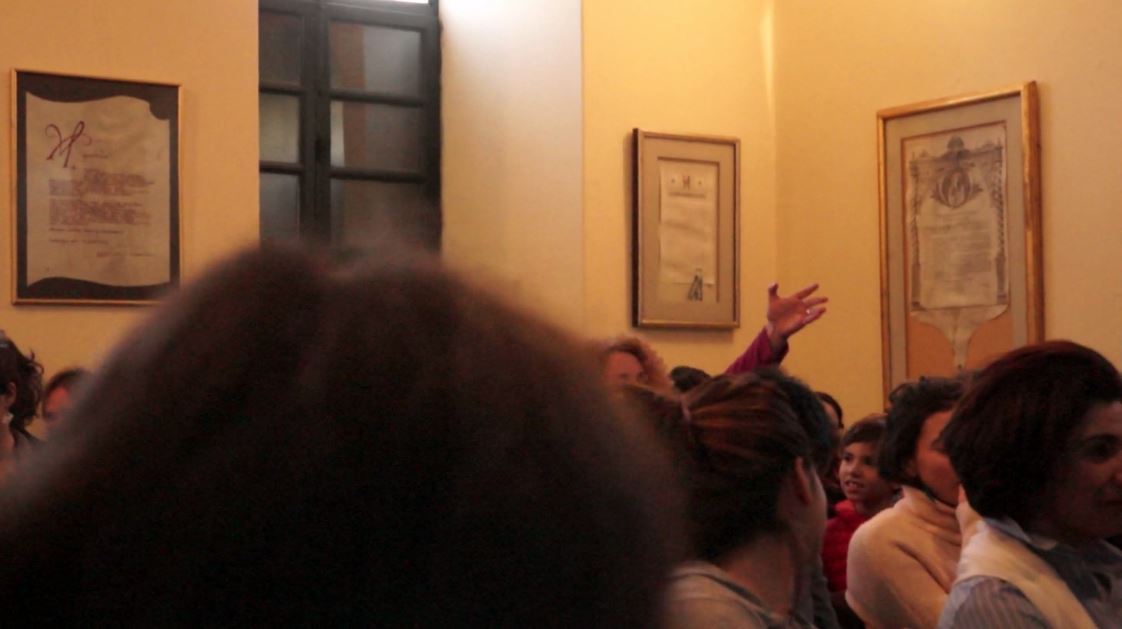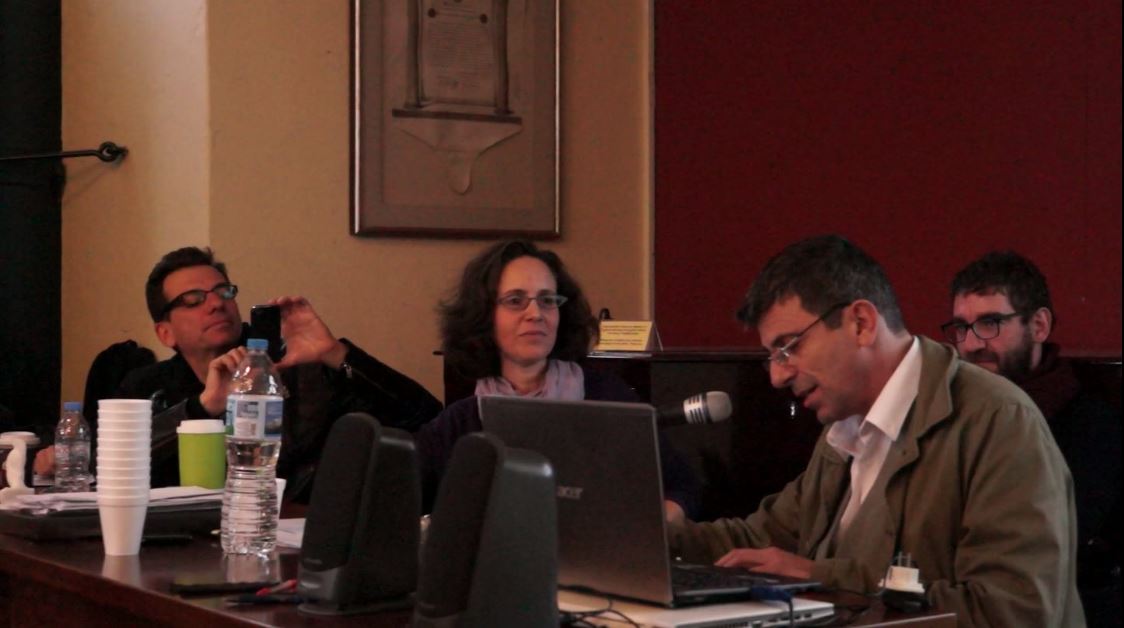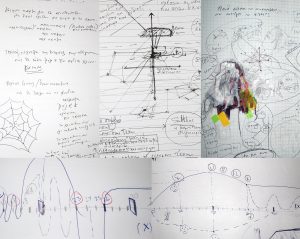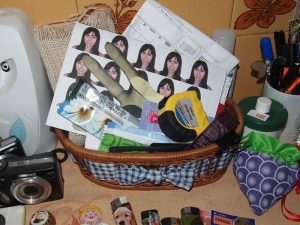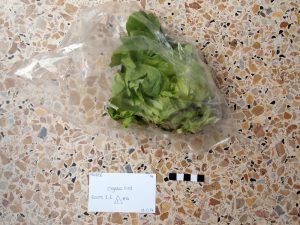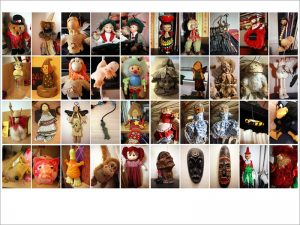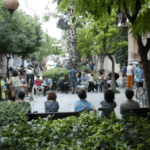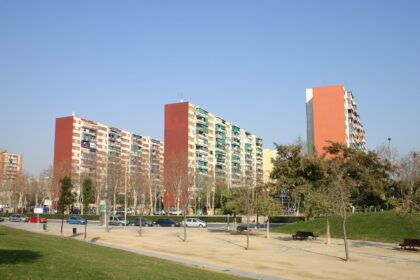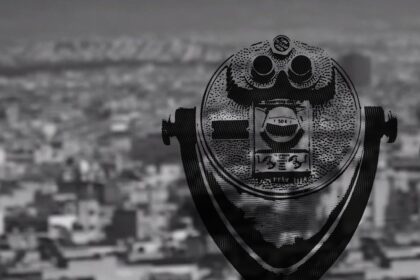The Return of the Unreal
Eleana Yalouri
Introduction
As early as 1986, in the light of post-Structuralist theory and literary criticism, James Clifford and George Marcus challenged the possibility of objective representation in ethnographic writing in their seminal book Writing Culture. They pointed to the colonial history of anthropology, the poetics and politics of ethnography and the power relationships involved in the production of ethnographic knowledge during fieldwork. Clifford and Marcus’s work marked a significant turn in anthropology as they problematized conventional ways of ethnographic writing and the methods of that time and sparked debates highlighting a “crisis of representation” in anthropology. Since then, much interesting work in anthropological theory and practice has been produced as a critique of conventional ways of not simply writing but also doing anthropology[1] using practices and methods that may depart from earlier logocentric models and may be able to highlight experiential fields, shifting the focus from the rational towards the study of the emotional, the sensory, the affective.[2]
But even though Writing Culture as well as other works that followed it have debunked the concept of objectivity and highlighted the multiple possible interpretations in ethnographic writing, there still seems to be a deeply rooted perception of a reality waiting to be conquered by the anthropologist who, following the dominant principles of modern science, methodically records, describes and analyses it. This reality is often juxtaposed to “fiction” or “imagination,” stereotypically attributed to “the Arts,” which with poetic license are allowed to deviate from the path of “truth.”
A hierarchical separation of the arts from “science” is historically a product of developments linked to the religious upheavals of the Reformation and the beginnings of early modern science;[3] it is additionally reproduced today in school education, which teaches that certain elements, stereotypically connected with the arts as opposed to those stereotypically connected with science, are not to be trusted. These, as Timothy Ingold has argued, include intuition and the sensuous as opposed to the intellect, imagination as opposed to scientific investigation and fiction as opposed to “the real world.”[4]
With “the return of the real” in art,[5] however, what constitutes reality has become a central question for contemporary art wishing to have political efficacy and to connect with society. It may also be time for anthropology to concede to “the unreal” and to “imagination” without removing them from the reality of which they can give a glimpse[6] and to elaborate on the implications art may have for anthropological theories, methodologies and strategies of representation and exhibition.
Α number of scholars have attempted to overcome the rupture between the real world and the way we imagine it, and have consequently tried to transcend polarizations such as theory vs practice, mind vs body, subject vs object, word vs image. My personal path from archaeology through museum studies to material culture studies has been influenced by the thought and work of these scholars[7] and by others who have introduced practices and/or collaborations between anthropology and art,[8] archaeology and anthropology,[9] anthropology and history[10] or archaeology and art.[11] My encounters with the work of these scholars and with the ways in which contemporary artists have dealt with issues that had occupied me in my own archaeological and anthropological work eventually opened up for me a field that departed from strictly academic ways and forms of knowledge. It allowed new means and possibilities of research – other than those conforming to the canons of one single discipline – to be explored. Ιt moved from the single-researcher model towards a collective form of research. It approached contemporary art not only as an object of study, but also as a tool or a partner[12] and allowed for an engagement with the visual and the material in a way that did not attribute to them a simply iconographic and/or an instrumental role secondary to that of ‘scientific discourse.’ This new possibility recognizes art’s capacity to contribute dynamically to restructuring that discourse and possibly to allow for the emergence of new forms of theory and practice.
In this paper I trace some of my own oscillations between (social) Science and Art and the stereotypes situating them at the two opposing poles of reality and imagination. I discuss a number of collaborative projects between the arts, archaeology and anthropology, in which I have attempted to overcome dichotomies that polarize them. I will reflect on these collaborations and their outcome as a way of understanding and analyzing the advantages and disadvantages of being and remaining “undisciplined.”[13] In the first part I present some moments from a workshop between Anthropology, Archaeology and Art I co-ordinated, and I refer to the participation of three artists who problematized the relation to what is real through their work. They engaged the audience in an interplay between the metaphorical and the literal and created uncertainties which destabilized canonicities and stereotypes. In the second part of this paper I reflect on my own experiences of three projects in which I collaborated with visual artists, and where the issues of uncertainty, ambiguity and the metaphysical emerged as themes and concepts to work with rather than to work on.
I. Between the literal and the metaphorical. The Present Past and the Engagement with the (Un?)Real.
The workshop Archaeology, Anthropology and Contemporary Art, which I coordinated as part of the Archaeological Dialogues conference that was held in Athens, Greece in January 2015, was a first attempt at exploring possible paths between fields.[14] This workshop consisted of an exhibition of relevant artworks and a roundtable aimed at both mapping some of the pre-existing relationships between archaeologists, anthropologists and artists in Greece and beyond, and exploring possibilities for new ones.
Archaeological and anthropological engagements with art and with artistic endeavors involving archaeology were presented and criticized by artists, archaeologists and anthropologists respectively. They revealed the ways institutionally defined fields which enter a conversation about transcending the boundaries between these fields, may in fact reproduce these limitations by trying to establish the expert’s knowledge and clearly demarcated disciplinary borders. Discussions that problematized the ways in which art may be ‘disciplined’ by archaeological and/or anthropological projects, which deploy it as a means of collecting ethnographic information, or interpreting archaeological or ethnographic material, were followed by others that highlighted art’s own forms of discipline, defined as they are by the historical canons and traditions of the art world and the academic community. At the same time, the workshop highlighted the internal diversity within the different “sides.” [15]Throughout the discussion, not only concepts but also terminology, methodological tools, theories and forms, even the concepts of “art” and “archaeology” themselves were invested with different content and were utilized in different ways for different purposes as they moved between Archaeology, Anthropology and Contemporary Art. This fact pointed to the need for either re-defining the terms we habitually use in the context of our specific fields of research and practice or adopting new concepts that allow intersubjective and cross-disciplinary encounters. More generally, it pointed to the value of and the possibilities, inherent in this ambiguous, liminal disciplinary space. It also pointed to the unpredictable spaces of intersubjective encounters and possible new forms of cultural analysis and critique. Here I will only refer to some instances from that meeting that exemplify such unpredictable spaces and encounters and reveal the possibilities as well as the paradoxes that may arise when different disciplines and fields of practice meet.
a. Mimesis and Lying
A case in point was the performance of art theorist and artist Kostis Stafylakis. The performance began with a certain Mr. Misouridis, who invaded the space of the Archaeological Dialogues conference and interrupted the flow of the roundtable by demanding to make an urgent announcement on behalf of the General Directorate of Antiquities. Amid staged and unstaged reactions and complaints from members of the audience, Misouridis managed to get a hearing [Fig. 1-4]. In his announcement, he adopted the official, heroic discourse, both in terms of form and content, about archaeological finds in the controversial excavation of Amphipolis, and he presented some allegedly ‘recent finds’ from the (fictitious) site of Klidonia, Konitsa, near Amphipolis. His intervention aroused public and private critical or even angry comments and discussions about the role of the Directorate of Archaeology in Greece and its official discourse, as well as the politics in which it is involved.
[Figures. 1-4. ‘Urgent Announcement’ by Kostis Stafylakis (contribution to the workshop ‘Archaeology, Anthropology and Contemporary Art’ at the Archaeological Dialogues conference, Athens, January 2015).
By drawing on and reproducing discourses from archaeological and other official press-releases, Stafylakis’ performance injected the official discourse of the Greek state into a conference that otherwise problematized that discourse and exposed it through mimesis.[16] By acting like a trickster, who transgresses social rules and unsettles established borders, Stafylakis held up a mirror to the Greeks’ relationship with their “difficult” classical heritage and archaeological institutions and commented on them in a more powerful way than any analysis could have done. He created an event that not only broke the regularity/canonicity of the roundtable discussion, but concurrently opened up possibilities of connection and a conceptual transition from the archaeological and anthropological discourse and practice presented in the first part of the roundtable to the artistic discourse and practice of the second part.[17]
b. The Metaphysics of Presence and Absence
Another piece of artwork that stirred extensive discussion was the Subject of Excavation by visual artist Panos Sklavenitis. The work, as its title indicates, was about the excavation of a subject (in this case a friend of the artist), which Sklavenitis assigned to a team of archaeologists and anthropologists. The members of the team met up with “the subject” at different places related to her everyday life, for example at her apartment. They followed her everyday itinerary, for example by joining her on a drive to her work in her car. They attempted a secondary excavation inside the fridge of her apartment. They talked to her and drew maps highlighting her subjectivity through her relationships with other people (including the artist himself) in different socio-temporal contexts.[Fig. 5-12] The artist’s insistence on a literal and not a metaphorical approach to “the excavation of a subject” inevitably led to two fundamental shifts: on the one hand the object of the excavation (habitually considered as static, passive and inanimate) was approached as an active subject – a person with mobility, intentions and desires. On the other, the practice of excavation was no longer focused on the past, but was manifest in the present. [18] Since these shifts are situated at the heart of archaeological practice, i.e. the excavation, they inevitably problematize the sources and tools of archaeological research, the limits of the archaeological field and practice, and its ethical parameters (how do you excavate a person?), as well as its basic processes of recording, restoration, collection and displaying. Simultaneously, they provoke questions related to the past’s (and the excavated subject’s) authority as well as their vulnerability, the factors involved in the configuration of their value as a public commodity and their private nature.
[Figures. 5-12. ‘Subject of Excavation’ by Panos Sklavenitis (contribution to the workshop ‘Archaeology, Anthropology and Contemporary Art’ at the Archaeological Dialogues conference, Athens, January 2015).]
The presentation of this work triggered an exchange of mainly theoretical perspectives, which led the discussion away from the visual artwork itself and revealed epistemological and ontological principles permeating the different fields of practice. More specifically, the discussion revolved around each field’s dominant approach to and evaluation of “materiality” and “dematerialization,” of “presence” and “absence” as a possible means of connecting art and archaeology. For the archaeologist Yannis Hamilakis the specific artwork was characterized by a metaphysics of absence, which he contended has long been questioned in archaeology (especially after the move towards emphasizing materiality, the senses and the body). Archaeologists, he said, were no longer trying to reproduce a dead past. In contrast to earlier (positivist) archaeological approaches, which aimed to recover the (lost) past, current trends try to connect it with the sociopolitical present. If “materiality” and “sensoriality” were for him elements that could connect the fields of Archaeology and Art, the artist/art historian Kostis Stafylakis considered that a long-since passé endeavor: according to Lippard,[19] “dematerialization” was a badge of innovativeness in the context of 1960s conceptual art, but from the 1970s on, when the world economy had caught up with the New York avant-garde and appropriated “dematerialization” for its own purposes, the resulting call for a re-materialization of art’s objects constituted a reaction, equivalent to that posed by conceptual art in the 1960s.[20] Therefore, Stafylakis questioned whether archaeologists had been at all influenced by the post-1980s art theory critique of “the metaphysics of presence” (the privileging of presence over absence in Western European philosophical thought).
The two interlocutors were obviously speaking from two different standpoints shaped by the history and traditions of their respective fields of practice as well as by personal fields of interest and their exchange pointed up the difficulties inherent in any attempt to transcend the limits of institutionally and historically defined fields of practice.
c. Revelation and Concealment
For her work Letter E for Agatha, visual artist Natasa Biza conducted a different kind of excavation, inside the archives of the American School of Classical Studies. As in her previous works, alluding to and problematizing the power of institutions, and the politics of collection and classification, Biza attempted to identify and reveal “cracks,” hitches and “errors,” which, tend to remain invisible under the cloak of the institutions’ authority and alleged “objectivity” and to be reproduced as historical truths.
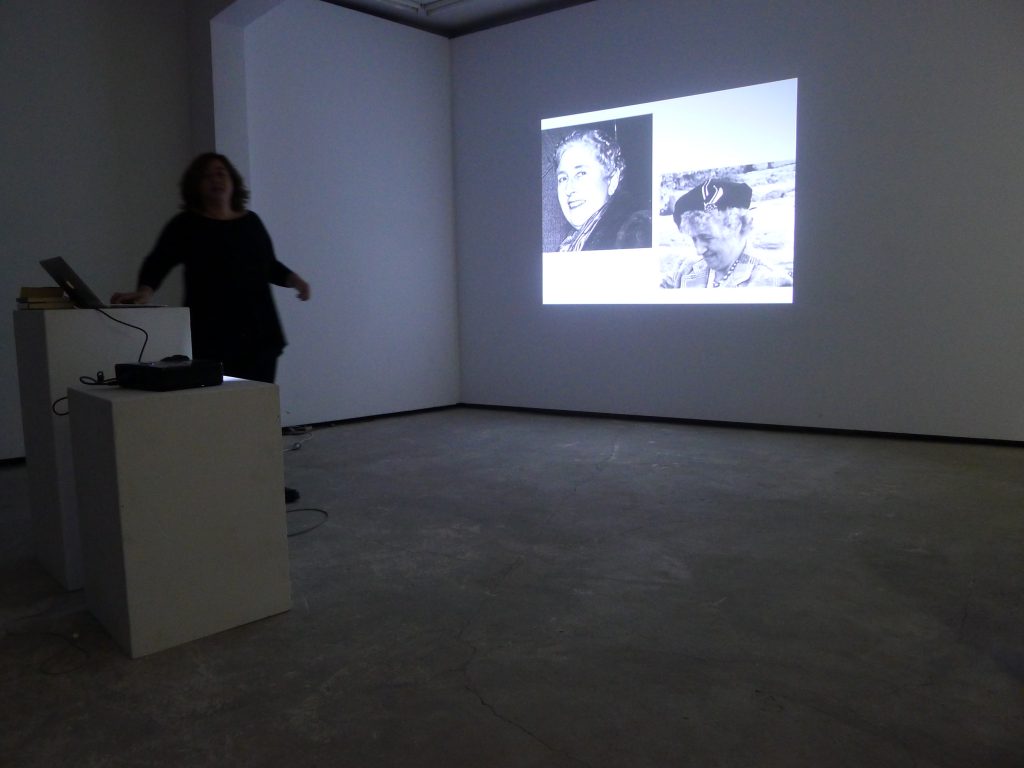
[Figure. 13. ‘Letter E for Agatha’ by Natasa Biza (contribution to the workshop ‘Archaeology, Anthropology and Contemporary Art’ at the Archaeological Dialogues conference, Athens, January 2015).]
The story of this project was presented in the form of a lecture performance at the Archaeological Dialogues workshop [Fig. 13]. The narration began with some photographs that Biza retrieved from the archive of the American School of Classical Studies featuring Agatha Christie being guided around the archaeological site of the Ancient Athenian Agora. Small but significant details encouraged Biza to question the credibility of the subtitles of the archival photographs that identify the person featured in the photographs with the famous writer. As a result, her quest in the archives gradually took on the form of a mystery story, similar to those written by Agatha Christie herself, who, in this situation, was transformed from a writer into a protagonist. In her art research and lecture performance, Biza employed forms borrowed from archaeological practices and methods of identification and interpretation of archaeological finds, i.e. excavation and typology, and she then applied them to the facial features of Agatha Christie. She thus rendered the face of the writer an object of archaeological value and research. In that sense, she also conducted ‘an excavation of a subject,’ as Sklavenitis had done. The close relationship of the famous writer to archaeology (she was married to an archaeologist and had, herself, written books about archaeology) was further alluded to by the artist in the title of her work, where the acronym agathe (agora athens excavations of the American School for Classical Studies) evokes Christie’s first name. Highlighting this close relationship also alluded to the blurring of boundaries between mystery stories and archaeology, a science often identified with the process of revelation of the concealed and the mysterious.
Although deconstructionist in nature, Biza’s work, like other works of contemporary art influenced by the “archaeological turn” in art,[21] borrows from archaeology the practice of excavation, which is permeated by and is informed by an ontology of depth (i.e. that the truth about the past is traceable somewhere deep in time and space).[22] Biza’s work retains some rather romantic elements of a remote and concealed (often mysterious and exotic) past that artists strive to expose, along with the hypocrisy of official History. In that respect, as the anthropologist Kostis Kalantzis (another participant in the workshop) commented, it maintains an ambiguous stance between a literal and almost forensic use of photography as evidence and a metaphorical or even ironic position questioning photography’s positivist use. That ambiguous stance was further accentuated by the context of its presentation: As one of the members of the audience remarked, because Stafylakis’ performance, which had preceded the presentation of Biza’s work, had created a different relation to what is real, the audience was no longer in a position to judge with confidence whether the story that Biza presented was true or fabricated. Even those members of the audience, who thought that her work was an ironic comment on the literal use of photography and constituted what one described as a “bottomless excavation” with no hint of a solution, were caught up in the process of trying to solve the mystery by suggesting clues to the artist-detective.
Through the use of mimesis, emphasis on the literal rather than the metaphorical approach to the excavation of a subject, and an ambiguous stance towards photography and archives as evidence, Stafylakis, Sklavenitis and Biza respectively constructed a specific relation with “the real.” This was not taken as a given but was problematized along with the cultures and disciplines that invariably support it. More generally, the workshop Archaeology, Anthropology and Contemporary Art as a whole problematized the epistemological and ontological premises of and canons prevailing in these disciplines and fields of practice. In doing so it also highlighted the ways in which these disciplines and fields dealt with topics such as the relevance of the past in the present and the implication of archaeology, anthropology and art in the production of knowledge about the present past.
Another series of collaborative projects in which I was involved was also engaged with the literal, metaphorical or ambiguous approach to “the real” but this one was oriented not so much towards the past as towards the future. While anthropologists do study practices that are linked with “the irrational” or “the metaphysical,” their accounts and practices remain “scientific” and tend to promote a careful, systematic and rational investigation, as if to keep a safe distance from what may be ambivalent and therefore ‘suspicious.’ Even anthropological studies which seek “ontologies” rather than “interpretations” and prioritize “worlds” over “worldviews”[23] do not mix emic and etic accounts, lest this distracts from the scientific accuracy of the study.[24] Art on the other hand is stereotypically linked with imagination and is therefore considered suitable to engage with such issues.
In the projects described below, the aim was to collect, juxtapose and reshuffle practices that blur the boundaries between the rational and the supernatural, the magic and the modern, the familiar and the strange, in order to unsettle “the effect of the real” and thus reclassify familiar categories and established hierarchies.[25] We specifically opted for an approach that employed the visual, which has long been considered ambiguous, and therefore dangerous and/or problematic when used in/by science. Our aim was to employ the visual not as an illustration or as a supplement to text, but in its own right.[26]
2. The Present Future and the Engagement with Ambiguity
a. The Metaphysics of the Greek Crisis.
The Metaphysics of the Greek Crisis: Predicting the Future[27] is a video that was the outcome of my collaboration with the visual artist Nina Pappa.[28] At a time when debt and impending bankruptcy weighed heavily on the future of Greece and were haunting its everyday life, the terms in which Nina and I began thinking of the crisis were those of uncertainty, suspense and aspirations, in which clear-cut certainties and polarizations between the rational and the irrational, science and art, the real and the unreal are transcended.
We chose to focus on the theme of prophecy and more generally of prediction as a means of approaching and analyzing the temporalities of the Greek crisis, which not only involve the past, but also the present and the future and include emotions, expectations and desires. The video consisted of a collage of extracts from YouTube videos on the theme of predictions about what is yet to come in Greece [Fig. 14-18]. These predictions were sourced from TV programs, the news, or personal recordings made by both professionals and amateurs addressing different kinds of audiences and using different forms and language. The extracts present well-known and anonymous people, Greek and British politicians, economists featured on prime-time American TV, Greek priests and American preachers, a popular Greek astrologer, a monk and a nun, as well as clairvoyants and chartists predicting Greece’s future.

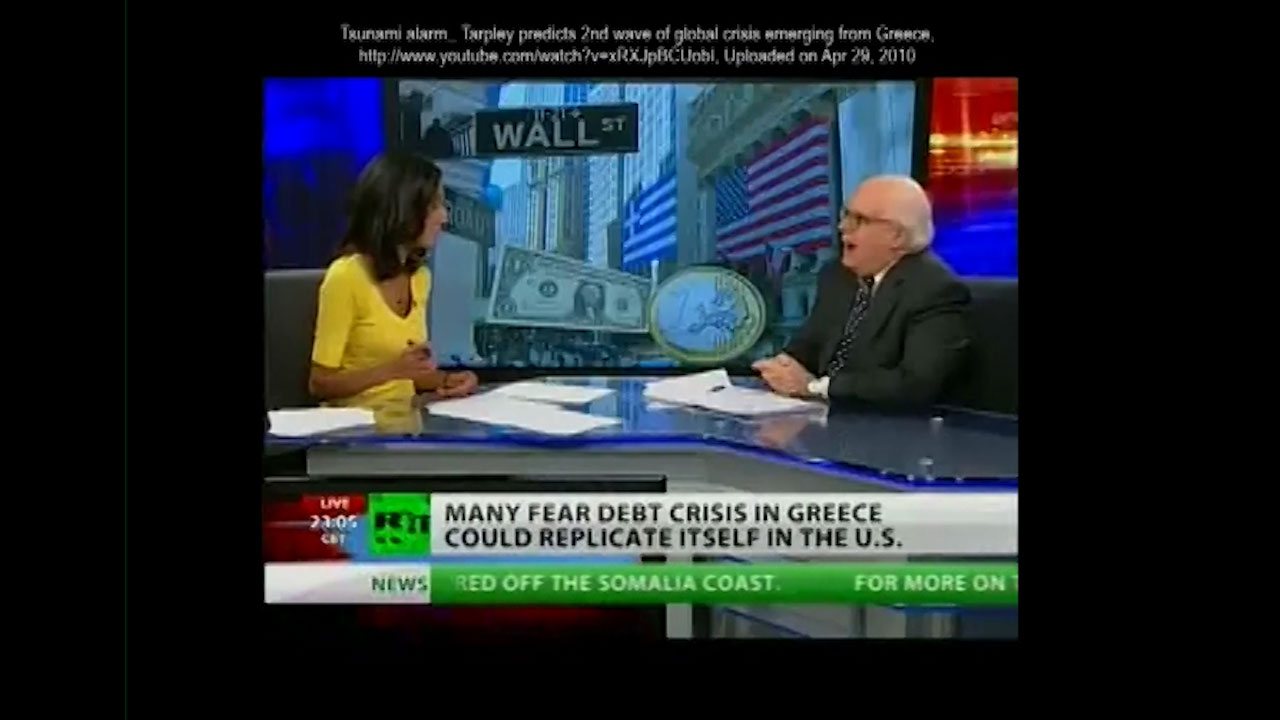

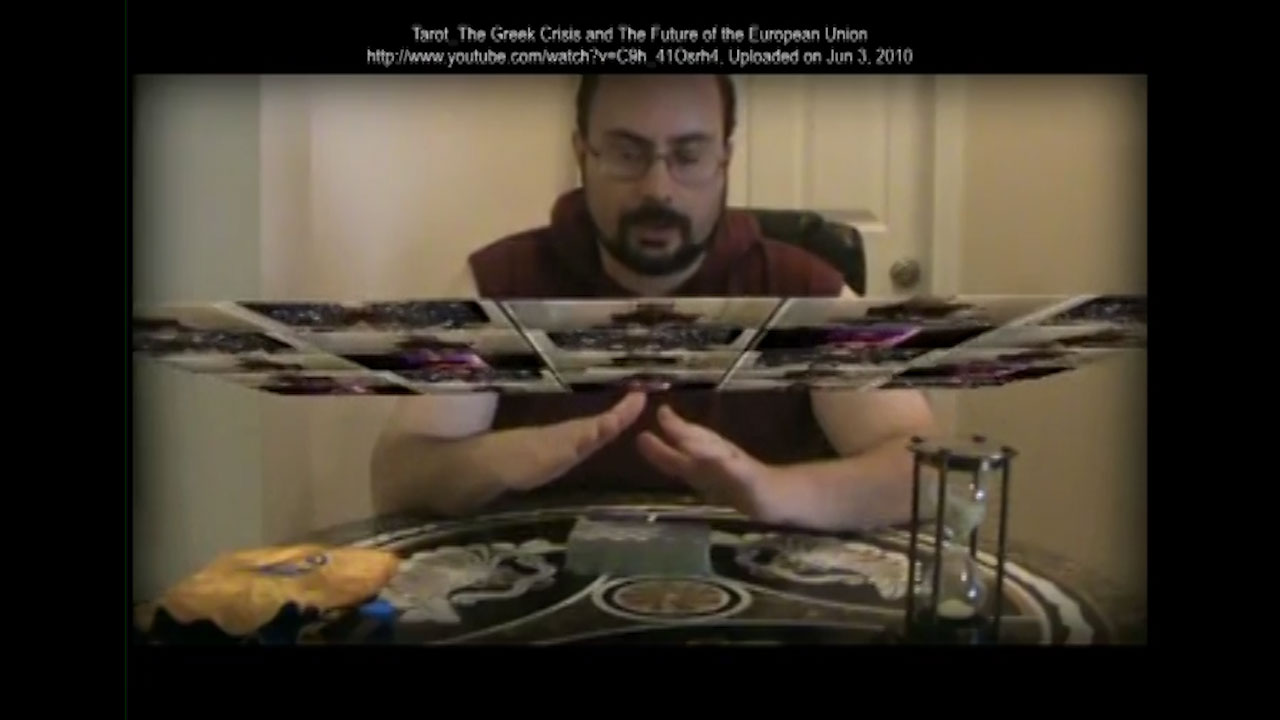

[Figures. 14-18. ‘The Metaphysics of the Greek Crisis. Predicting the Future’ by Eleana Yalouri and Nina Pappa (first screening at the workshop Imagi(ni)ng ‘Crisis’: Materialities of Seeing and Representing in the Greek Critical Conjuncture, December 2013).]
During the first projection of our video an anthropologist made a critical observation because the collage of YouTube extracts provoked laughter in the audience. More specifically, his critique referred to the risk of ambiguity inherent in the specific selection and juxtaposition of the particular sociocultural categories (the priest, the economist, the nun, the politician, the astrologer, all making predictions) included in the montage, which, as was pointed out, might lead to the ridiculing of these people and of the respective social categories involved. It is worth noting here that the visual per se has been considered suspect as a medium by various regimes of knowledge for two reasons: either because of its ambiguity, which is considered incompatible with the transparent, objective analysis of academic discourse, or because it retains a realism that conceals the constructed character of representation.
Laughter broke out at different times in the video: for example, at points where dissimilar cultural categories (“high” and “low,” “rational” and “metaphysical” and so on) were juxtaposed, at moments of transition in the montage from political and economic predictions to metaphysical and supernatural ones, or during some of the non-rationalized predictions made by monks, priests, tarot readers, or some ambivalent personalities well-known in Greece. The nature of laughter is, however, not a given and the viewers’ laughter may be as ambiguous as the montage itself. It may be the result of embarrassment, awkwardness, empathy, or mockery. The viewers may feel self-pity or sorrow, or they may feel insulted.
Although ambiguity was considered a negative feature of the video by some, it was a feature Nina and I found appropriate and in tune with the unforeseeable discourses, feelings, and embodied performances that the crisis itself provokes.[29] Instead of attempting to draw any conclusions or to explain things away, we juxtaposed dissimilar personas, sociocultural categories, aesthetics and rhythms in order to highlight paradoxes, and to create an open-ended experience that left room for doubt and questioning and allowed for different reactions and feelings. In other words, we wished to try out ways of approaching the crisis by adopting some of the constituents of the crisis, such as unpredictability and ambiguity.
Timothy Ingold has argued that, instead of placing anthropologists and artists on opposite sides of an academic fence with anthropologists representing thinking and artists representing making, we should instead envision both anthropology and art as ways of thinking through making.[30] I see the video as a means of triggering debate about the ways in which an encounter between art and anthropology may offer the tools for a new discussion on the borders between science and culture, the rational and the metaphysical and myth and history as well as the ways in which these are enmeshed in the production of knowledge and open up possible paths for ethnographies, or rather anthropologies in/for the future.
b. The cryptic materiality of words.
In an earlier collaboration of ours, Nina Pappa and I had also problematized the ways the metaphysical and the modern tended to be seen as polar opposites. Identified with backwardness, illusion and delusion, the metaphysical has been connected with the pre-(or non-) modern, the primitive, the non-western, the culturally other. It was also considered incompatible with the rationalism and secularization of modernity. Intellectuals, such as Bruno Latour,[31] or Peter Pels,[32] however, have shown that the non-rational, the metaphysical and magic are part-and-parcel of modernity and do not just “exist” in modernity. On the one hand, modernity constructs them as its counterpoint, and, on the other, it produces its own forms of the metaphysical and magic, which are connected with practices culturally inherent in states, societies and economies of the modern and postmodern world.[33] As a consequence, magic feels comfortable in the contemporary world, while categories such as the (modern, rational) scientist and the (primitive, irrational) magician present unexpected similarities that overlap.
This research project was part of a wider trans-disciplinary project between art and anthropology.[34] It eventually took shape in the form of two lecture performances (one by the author alone and the other jointly with Nina Pappa) and a published paper,[35] where we reflected on the affinity between art, magic and academic discourses, as “technologies of enchantment.”[36] Drawing on Michael Taussig, among others, who describes magic as the ultimate form of science, oscillating between belief and skepticism, deception and technique,[37] we sought to establish some of the key ingredients that constitute the apocryphal character of the obscure and often incomprehensible magical, artistic and/or academic code, which requires initiation to become understandable. We focused on words engaged in such discourses-technologies and specifically on what we called their “cryptic” materiality, because this materiality has often been identified with occult beliefs and practices, and, moreover, prejudice against it has kept it long hidden, at the margins of academic discourse.[38]
Words constitute “material components” of a magic spell or “verbal missiles,” which can act on the person they are aiming at.[39] Academic discourse, like magical, political, legal and other discourses, also “does things” – it has the social power to condemn, to exculpate, to stigmatize and control, thus reproducing and reshaping forms and structures of power. Art, on the other hand, has been analyzed as a technology of enchantment that enchants or bewitches its recipients, while it acts in the sector of social relationships.[40] It has also been stereotypically connected with magic, while the etymology of the term “[art] curator” itself, alludes to the fact that contemporary art has often been considered and approached as a form of collective curing, especially under the influence of shamanism, as well as the presence of artist-shamans like Joseph Beuys, Henri Michaux and others.[41]
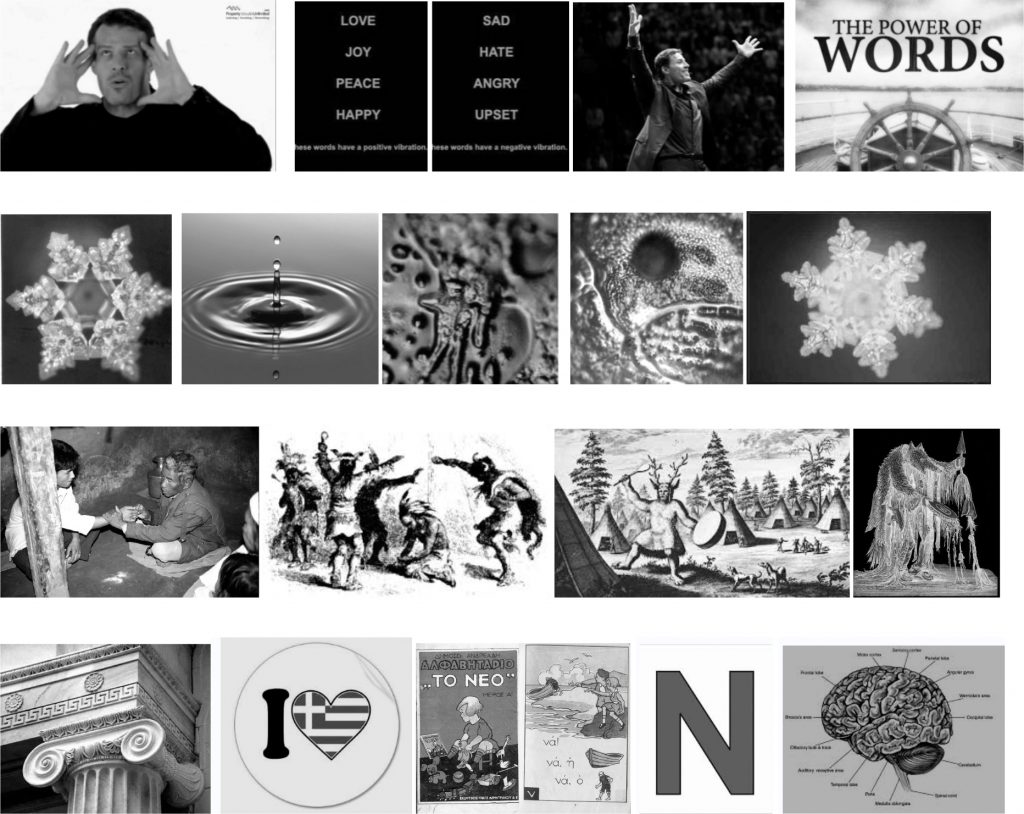
[Figure. 19. Instances from ‘The Cryptic Materiality of Words’ by Eleana Yalouri and Nina Pappa.]
Nina and I tried out several different forms of presenting the collected material that consisted of video instances and other visual and sound material coming from the internet or from interviews with informants, and presenting aspects of the performance of magic practices, their material effects and their performers [Fig. 19]. Although in the final paper we did not overcome the stereotypical distinction between the scholar who signs the paper and the artist who undertakes its illustration, our contributions were complementary and mutually influential and resulted in an unconventional form of writing and referencing. This form was in dialogue with the illustration: it juxtaposed, and mingled words, things, materials and persons, and was pervaded by a rhythm alluding to that of the articulation of a magic spell. Above all, it employed a research technique, which – inspired by its object – oscillated between alchemy and science, and pre- and (post)modern practices of research.
c. Predictions by Bella Kydonaki. Learning from Athens and Learning from documenta. Engaging with Uncertainty.
Predictions by Bella Kydonaki. Learning from Athens and Learning from documenta, a video by visual artist Fotini Gouseti and the author was another collaboration that emerged in the context of the trans-disciplinary Learning from documenta research project.[42]
Uncertainty often interferes with and/or defines any research project, especially when the project involves different fields of practice and expertise. This sort of uncertainty certainly affected the Learning from documenta project, which we had both experienced as particularly difficult, unpredictable and uncertain in various ways: not only was it taking place on unfamiliar ground, in-between different fields of practice and expertise, but it also involved a difficult relationship between the researchers and the subjects of their research, followed by various misunderstandings and misinterpretations. Moreover, the project was conceived in order to study an exhibition, whose nature and participants had been intentionally kept secret from the public for some time.
Drawing on a joke, often made in our research group, which referred metaphorically to the need for an astrologer’s help to deal with such a difficult project, we decided to address the issue with the poetic license of art and chose to follow a knowledge path considered at best unconventional, if not positively prohibited, in science: we visited an astrologer and asked her to predict the future of the learning from documenta and the learning from Athens projects, as well as their future relationship. Instead of treating uncertainty as a problem, we acknowledged it, and put it at the core of our approach, to move forward with it into the future.
While in most research projects we tend to consider the historical background of the research issues that occupy us and cite relevant work preceding our own as appropriate, we rarely consider our research with systematic reference to the future. Although, especially since the 1980s, a vast literature has concerned itself with the ways the present constructs the past and vice-versa, the important parameter of the future tends to be overlooked in many analyses of historicity and temporality.[43] We wished to address that parameter of the future as well as the multiple interpretations (or misinterpretations), which have the power to write history and are connected with aspirations, projections and desires.
In his Art and Agency; An Anthropological Theory of Art, Alfred Gell[44] suggests a non-linear approach to time derived from Marcel Duchamp’s The Large Glass. In this approach, future time already exists in the past and in the present, for example in artists’ preparatory sketches, which foreshadow, and potentially contain, the artist’s future oeuvre. If for Gell, an artwork is part of a technology of enchantment and acts as a trap, one might also claim that artworks also act as time-traps. Prophecies and predictions in general could also be seen as traps of time, while the astrologer, the prophet or the magician could be seen as an artist who has the skill and the know-how to access, conquer or trap the future.
For example, a book used by the astrologer we visited consisted of “astrological newspapers” which listed every single day between the years 2001 to 2050 and numerical information about the longitude of the planets in relation to the horoscopes at different times of each of these days. The book was used to give information about synastries and nodal points in the movement of these planets, influencing and informing events in the longue durée. It looked like a big trap, summing up history and the moments when a human existence was caught up in the stream of past, present and future time and was created.
That book was strikingly reminiscent of the work of a Japanese conceptual artist, On Kawara: One Million Years: Past (subtitled “For all those who have lived and died”) and One Million Years: Future (subtitled “For the last one”). Back in the 1990s, On Kawara created a book which consisted of two volumes: the first covered one million years stretching backward from the year when On Kawara made the set and covered the period between 998,031 BC and 1969. It is dedicated to “all those who have lived and died.” The second book, Future, stretched forward one million years, covering the period between 1993 and 1,001,992 CE and is dedicated to “the last one.” These volumes were organized in ten leather binders, each holding two hundred pages, with each page containing five hundred years. To make the calendars, Kawara developed a cut-and-paste technique, gluing columns of single digits to typed and photocopied grids of numbers. He then photocopied the whole page to conceal the glued areas and placed the pages in transparent plastic sleeves.[45] The outcome looked very similar to the book of the astrologer we visited.
On Kawara is well known for his interest in time and in how dates are used to grasp time’s elusiveness. Browsing through the thousands of pages of these volumes the viewer/the reader enters a huge time-scale where “events are dust” as Braudel puts it and in which one can locate one’s own presence. One Million Years therefore works like a time-trap, which is at the same time a trap that enchants its viewer.
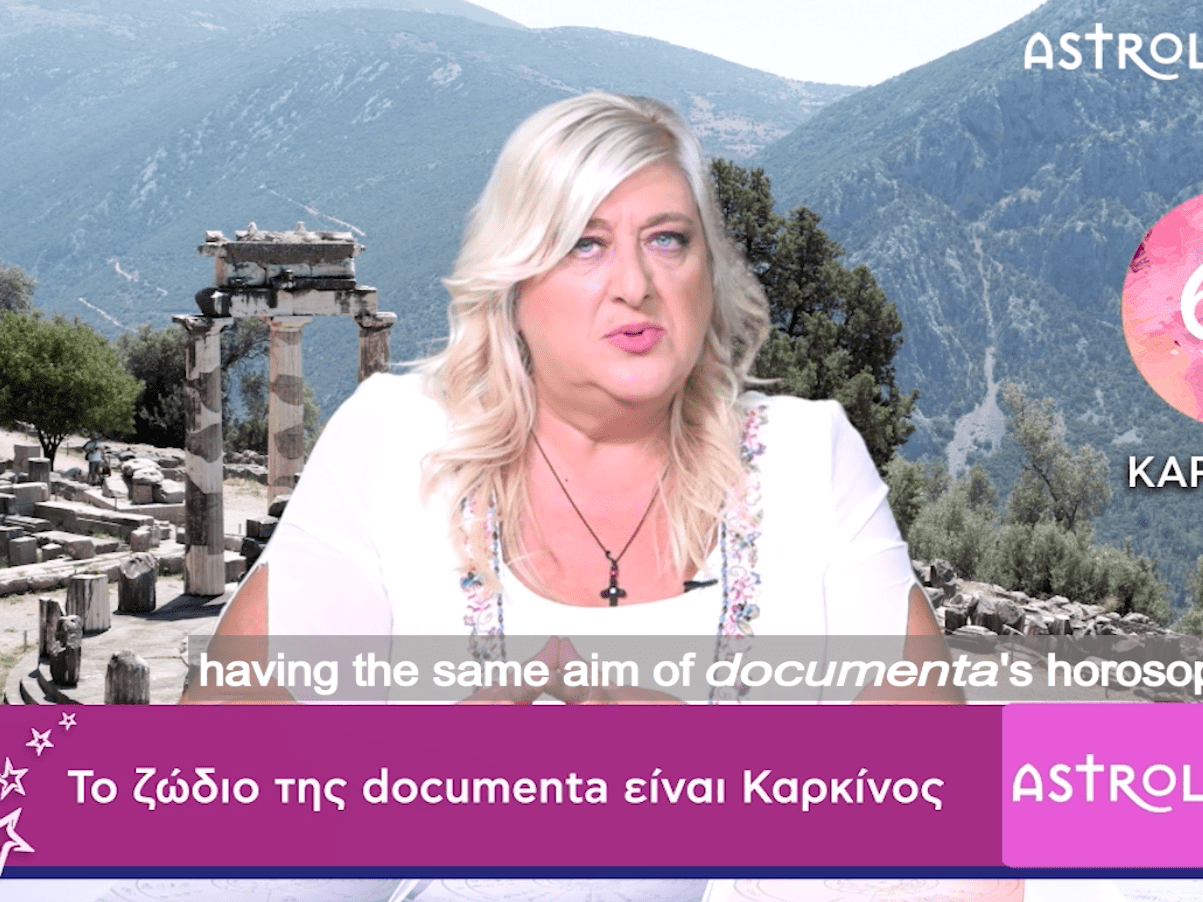
[Figure. 20. ‘Predictions by Bella Kydonaki. Learning from Athens and Learning from documenta’ by Fotini Gouseti and Eleana Yalouri (first screening at the closing event of the Learning from documenta project, October 2017).
We kept an archive of photographs, sound and videos from our meetings with the astrologer, and we worked on it to find the right way to deliver and communicate the experience and knowledge we had derived. We decided that the most appropriate form to adopt was the one previously adopted and used by the astrologer herself in the videos she uploads on the site (www.astrology.gr) on a weekly basis. Predictions by Bella Kydonaki. Learning from Athens and Learning from documenta was shot in the same studio where all predictions by Kydonaki are shot, and it was uploaded on the same site [Fig. 20]. Although our work did not start off with a clear theoretical aim and approach – we just went ahead and did it – it inclined our thoughts towards various theoretical considerations, related to the interplay between the rational and the irrational, the known and the unknown, the revelation and the concealment involved in research and in the process of knowledge production. It also highlighted Timothy Ingold’s suggestion about the virtues of academics attempting to think through making rather than make through thinking.
Conclusions
Over the last four decades theoretical developments in the social sciences have encouraged them to move towards the study of new experiential fields which relate to sensoriality, affect, emotions and desires, as well as the unknown, the non-rational and the metaphysical. Nonetheless, there is still a great deal of suspicion in engaging with these issues on their own terms. In this paper I have discussed some examples of thinking in or with, rather than about what has been stereotypically considered as “the unreal.”
By arguing for “the unreal,” however, I do not mean to undermine rational thought in terms of the latter’s efficiency. I rather see it and employ it as a means of thinking again about established certainties of science and to highlight a possible alternative economy of knowledge to that in which the search for “the truth” and “the real” has been the exclusive privilege of rational science.
Instead of rejecting concepts such as “uncertainty” and “ambiguity” as incompatible with science, scientists may wish to acknowledge and work with the ambiguities and uncertainties of the world they study and of which science itself is a part. [46]
Engaging with unfamiliar research methods, unlike those we usually employ in our own fields of expertise, may open up new pathways of understanding, imagining and making the world. It may problematize deeply-held assumptions and suggest alternative perspectives and ways of doing things differently. But, more generally, it may also make us more aware of the complexity of the processes involved in the production of knowledge.
An engagement with what Christopher Wright calls the “open-endedness or uncertainties of artistic endeavors”[47] may offer a legitimate context in which to imagine and try out different approaches to familiar and unfamiliar subjects of study. Still, one should always take into consideration the limits and the responsibility entailed in such an undertaking. Being uncertain and ambiguous could be a way of reproducing rather than destabilizing or subverting dominant forms of knowledge and stereotypes. It could also lead to the elitist employment of difficult, ambiguous messages by artists, anthropologists etc., who assume “they know better” and can entrap others, who are “ignorant.”
A “situated responsibility,” [48] self-reflexivity and consideration of ethics may be ways of approaching this undefined, ambiguous in-between area where sciences, pseudo-sciences and art meet. This area is dynamic, emergent and relational and may enable us to consider futures and change-making as part of processual worlds of uncertainty and possibility.[49] We still need to take a leap of faith, dare to leave the margins of our respective fields, and venture through trans-disciplinary windows.[50] This could be a way of unsettling convictions and the unquestioning compliance of the different disciplines, in order to enable the formation of new forms of creation, theory and practice.
Eleana Yalouri is an assistant professor at the Department of Social Anthropology at Panteion University of Social and Political Sciences in Athens. She has a BA in Archaeology (University of Crete, Greece) an MPhil in Museum studies (University of Cambridge), a PhD in Social Anthropology (University College London), and conducted postdoctoral research at the University of Princeton, USA. She has been a visiting lecturer at the University of Westminster, London and a lecturer at the Dept of Anthropology of University College London. Her research interests include theories of Material Culture, cultural heritage and the politics of remembering and forgetting; anthropology and contemporary art; anthropology and archaeology. Her book The Acropolis. Global Fame, Local Claim (2001) discusses the modern life of the Athenian Acropolis, and the ways in which modern Greeks deal with the national and international features of their ancient classical heritage. Her edited volume Υλικός Πολιτισμός. Η Ανθρωπολογία στη Χώρα των Πραγμάτων (Material Culture. Anthropology in Thingland) (2012) offers a systematic review of theories and ethnographies on key fields of material culture. Her current research projects involve collaborations with visual artists and art historians exploring the borders between contemporary art and fields of inquiry dealing with the material culture of the past or present, such as archaeology and anthropology.
Notes:
[1] cf Marcus, this special issue.
[2] Eleana Yalouri, “‘The Metaphysics of the Greek Crisis’: Visual Art and Anthropology at the Crossroads,” Visual Anthropology Review 32, no. 1 (May 2016): 38–46, https://doi.org/10.1111/var.12091.
[3] Timothy Ingold, “Dreaming of Dragons: On the Imagination of Real Life: Dreaming of Dragons,” Journal of the Royal Anthropological Institute 19, no. 4 (December 2013): 735, https://doi.org/10.1111/1467-9655.12062.
[4] Timothy Ingold “Dreaming of Dragons: On the Imagination of Real Life: Dreaming of Dragons:” ibid
[5] Hal Foster, The Return of the Real: The Avant-Garde at the End of the Century (Cambridge, Mass: MIT Press, 1996).
[6] Timothy Ingold “Dreaming of Dragons: On the Imagination of Real Life: Dreaming of Dragons:” 739
[7] e.g. Christopher Tilley, Web Keane, Susanne Küchler, Mike Rowlands, Patricia Spyer eds., Handbook of Material Culture (London; Thousand Oaks; New Delhi: Sage, 2016); Dan Hicks and Mary Carolyn Beaudry, eds., The Oxford Handbook of Material Culture Studies (Oxford; New York: Oxford University Press, 2010).
[8] e.g. Arnd Schneider and Christopher Wright, eds., Between Art and Anthropology: Contemporary Ethnographic Practice, (Oxford; New York: Berg Publishers, 2010); Tim Ingold, Making: Anthropology, Archaeology, Art and Architecture (London; New York: Routledge, 2013).
[9] e.g. Duncan Garrow and Thomas Yarrow, eds., Archaeology and Anthropology (Oxford, UK; Oakville, CT: Oxbow Books, 2010); David Shankland, ed., Archaeology and Anthropology: Past, Present and Future, ASA Monographs (London; New Delhi; New York; Sydney: Bloomsbury, 2012).
[10] e.g. Charles Stewart, Dreaming and Historical Consciousness in Island Greece (Cambridge, MA: Harvard University Press, 2012).
[11] e.g. Ian Russell and Andrew Cochrane, eds., Art and Archaeology: Collaborations, Conversations, Criticisms, One World Archaeology (New York: Springer, 2014); Douglass W. Bailey, Andrew Cochrane, and Jean Zambelli, Unearthed: A Comparative Study of Jōmon Dogū and Neolithic Figurines (U.K: Sainsbury Centre for the Visual Arts, 2010).
[12] Elpida Rikou and Io Chaviara, “‘Crisis’ as Art: Young Artists Envisage Mutating Greece,” Visual Anthropology Review 32, no. 1 (May 2016): 47–60, https://doi.org/10.1111/var.12092.
[13] Daniel Miller and Christopher Tilley, “Editorial.” Journal of Material Culture 1(1)1996: 12.
[14] http://archanthart.wixsite.com/archanthart (accessed May 20, 2018)
That was the first year of what subsequently became the annual conference ‘Archaeological Dialogues’ (including workshops, presentations, discussions, and other events), which was established in Greece as a critical and reflective dialogue on antiquities and archaeology in contemporary society. It invited students, teachers, practitioners and/or theorists of archaeology as well as specialists and non-specialists from various other fields, such as anthropologists, historians, sociologists, art historians, museologists, architects, and artists, who were interested in contributing to the conversation about the role and significance of antiquities and archaeology today.
[15] cf. Duncan Garrow and Thomas Yarrow “Introduction: archaeological anthropology,” in Archaeology and Anthropology. Understanding Similarity, Exploring Difference, eds. Duncan Garrow and Thomas Yarrow (Oxford and Oakville: Oxbow Books, 2010), quoting Tilley 1996, p. 5.
[16] I refer to mimesis here, not in its narrow sense of duplication of an original prototype/of reality, but as a dynamic activity, historically and socio-politically defined, connected with social practices and intersubjective relations, which can function subversively towards that which it purports to imitate. Michael T. Taussig, Shamanism, Colonialism, and the Wild Man: A Study in Terror and Healing (Chicago: Univ. of Chicago Press, 1986).
[17] In recent years in Greece, various artists and art groups have employed strategies of parody, irony, satire, mockery and outright lying. For several of these artworks ‘overidentification’ has been a significant source of inspiration. Overidentification, which is particularly supported and employed by Stafylakis, refers to a series of artistic examples from East Germany, especially from the 1980s onwards, as well as others in social media activism from the 1990s onwards. In these examples the artists do not keep a secure/critical distance from the ideological forms they experience as repressive, but identify with them with the aim of deconstructing them. They construct a public lie or the conditions for it to emerge, as a way of inhibiting ‘the totalizing function of social normality’ and as a way to oppose to any form of artistic humanism [see https://circuitsandcurrents.info/a-politics-of-lies (accessed August 22, 2017); http://theartfoundation.metamatic.gr/EN/Event/3846/A_Politics_of_Lies/ (accessed May 20, 2018)].
[18] These shifts concern three theoretical developments in Archaeology, Anthropology and Material Culture studies: 1) developments which do not confine archaeological practices to the investigation of a chronologically remote past, but rather experiment with the discipline’s tools and methods in the present (contemporary archaeology); 2) developments which urge us to see things not as passive and inanimate, but as living, dynamic and capable of acting within the social and cultural context in which they participate; and 3) the reconceptualization of the subject not in an essentialist and inward-looking light, but rather in terms of an intersubjectivity developed through relationships in time and space, captured and designed in spatio-temporal terms, without being localized in a tangible ‘material presence.’
[19] Lucy R. Lippard, Six Years: The Dematerialization of the Art Object from 1966 to 1972 (Berkeley: University of California Press, 1997).
[20] Dieter Roelstraete, The Way of the Shovel: On the Archaeological Imaginary in Art (Chicago: Museum of Contemporary Art in association with The University of Chicago Press, 2013), 46, footnote 32.
[21] Dieter Roelstraete, The Way of the Shovel: On the Archaeological Imaginary in Art.
[22] The notion of the ontology of depth is founded on a western philosophical outlook on the world, according to which the perishable, the ephemeral and the often ‘false’ surface is juxtaposed to deeper (artistic, psychological, archaeological etc.) ‘truths’ [Daniel Miller, “Materiality: An Introduction,” in Materiality, ed. Daniel Miller (Durham; London: Duke University Press, 2005), 1–50]. The ontology of depth has permeated philosophical thought as well as various fields from archaeology and psychoanalysis to literary theory and artistic thought and practice. Thus, Picasso’s idea of the protean artist who does not seek but finds, has several similarities with the stereotypical representation of the archaeologist. Both artist and archaeologist emerge as the quintessence of the heroic figure of the seeker, a man or woman with a mission (Roelstraete, The Way of the Shovel: On the Archaeological Imaginary in Art, 24, footnote12, 43). Even in the context of post Structuralist thought, the ontology of depth has played an important role in, for example, Foucault’s The Archaeology of Knowledge in which the archaeological ‘deep’ method of analysis (also used in his previous works Madness and Civilization, The Birth of the Clinic, The Order of Things) becomes standardized.
[23] Amiria J. M. Henare, Martin Holbraad, and Sari Wastell, eds., Thinking through Things: Theorising Artefacts Ethnographically (London; New York: Routledge/Taylor & Francis Group, 2007).
[24] Timothy Ingold “Dreaming of Dragons: On the Imagination of Real Life: Dreaming of Dragons:” 735.
[25] Eleana Yalouri, “‘The Metaphysics of the Greek Crisis’: Visual Art and Anthropology at the Crossroads:” 41, https://doi.org/10.1111/var.12091.
[26] Christopher Pinney, Photos of the Gods: The Printed Image and Political Struggle in India (London: Reaktion, 2004); Konstantinos Kalantzis, “Introduction-Uncertain Visions: Crisis, Ambiguity, and Visual Culture in Greece,” Visual Anthropology Review 32, no. 1 (May 2016): 5–11, https://doi.org/10.1111/var.12088.
[27] Nina Pappa and Eleana Yalouri, The Metaphysics of the Greek Crisis: Predicting the Future, 2015. Video, 15 min, https://vimeo.com/120228377.
[28] See Eleana Yalouri, “‘The Metaphysics of the Greek Crisis’: Visual Art and Anthropology at the Crossroads,” for an extensive discussion of the video and its history.
[29] Dimitrios Theodossopoulos, “Infuriated with the Infuriated?: Blaming Tactics and Discontent about the Greek Financial Crisis,” Current Anthropology 54, no. 2 (April 2013): 200–221, https://doi.org/10.1086/669855; Dimitrios Theodossopoulos, “The Ambivalence of Anti-Austerity Indignation in Greece: Resistance, Hegemony and Complicity,” History and Anthropology 25, no. 4 (August 8, 2014): 488–506, https://doi.org/10.1080/02757206.2014.917086; Konstantinos Kalantzis, “‘Fak Germani’: Materialities of Nationhood and Transgression in the Greek Crisis,” Comparative Studies in Society and History 57, no. 04 (October 2015): 1037–69, https://doi.org/10.1017/S0010417515000432.
[30] Timothy Ingold, Making: Anthropology, Archaeology, Art and Architecture.
[31] Bruno Latour, We Have Never Been Modern, 5th pr (Cambridge, MA: Harvard University Press, 1993).
[32] Peter Pels, “Magic and Modernity,” in Magic and Modernity: Interfaces of Revelation and Concealment, ed. Pels, Peter and Meyer, Brigit (Stanford: Stanford University Press, 2003).
[33] As Pels notes in “Magic and Modernity,” it may be that modernity constructs or reconstructs magic in terms that differentiate it from modernity, but at the same time it creates the conditions under which magic as ‘eternal nature’ or ‘apocryphal truth’ (e.g. in European Hermeticism), as poetic imagination (e.g. in Romanticism) or as the omnipotence of thought (e.g. in Freud and psychoanalysis) haunts and often contests modernity. Moreover, in the context of postcolonial and postmodern critical theory the previously depreciative connotations of magic that identified it with ‘other’ beliefs and cultures are undermined and they are also contested by ‘alternative’ New Age cultural practices and perceptions, which often call upon their potential for truth. Through a historical overview of anthropological thought on magic, witchcraft, shamanism and the apocryphal in general, Pels highlights the various ways in which these concepts were the product of the Western European Christian world. He shows, for example, the close relationship between fetishism and the Enlightenment’s materialism, between shamanism and Romanticism, between witchcraft, functionalism and the modernity of the 30s and the 50s.
[34] Panayotis Panopoulos and Elpida Rikou, eds, Φωνές/Fonés (Athens: Nisos, 2016).
[35] Eleana Yalouri, “H (απο)κρυφη υλικότητα των λέξεων” [The cryptic materiality of words], in Φωνές/Fonés, eds. Panayotis Panopoulos and Elpida Rikou, 60-71 (Athens: Nisos, 2016).
[36] In his anthropological theory of art, Alfred Gell presents art as a technology which enchants or bewitches its recipients, and acts in the sector of social relationships. Given that for Gell language is the most fundamental of all technologies, we suggested approaching academic language too as part of a technology of enchantment, able to transform its object and to enchant, entrap or control its recipients.
Alfred Gell, “The Technology of Enchantment and the Enchantment of Technology,” in Anthropology, Art, and Aesthetics, by Jeremy Coote and Anthony Shelton (Oxford: Clarendon Press, 1992), 232–54.
[37] Michael T. Taussig, Mimesis and Alterity: A Particular History of the Senses (London: Routledge, 1993).
[38] A juxtaposition is usually made between the ‘material thing’ and the immaterial ‘discourse and/or language,’ which is supposedly formulated at the level of the mind and turns into air on being articulated. This ‘immaterial,’ ‘mental’ perception of discourse and language is not only prioritized vis-a-vis the ‘material thing,’ but also becomes a model in the latter’s analysis. We therefore wished to reflect on the borders between the two by focusing on what we called the ‘cryptic’ materiality of words involved in such discourses, because this materiality has often been identified with occult beliefs and practices, and moreover, prejudice against it has kept it long hidden, on the margins of academic discourse.
[39] Bronislaw Malinowski, Coral Gardens and Their Magic: A Study of the Methods of Tilling the Soil and of Agricultural Rites in the Trobriand Islands. II, the Language of Magic and Gardening (Indiana; London: Indiana University Press /George Allen and Unwin, 1966 [1935]).
[40] Alfred Gell, Art and Agency: An Anthropological Theory (Oxford; New York: Clarendon Press, 1998).
[41] Vangelis Athanassopoulos, personal communication.
[42] See Yalouri and Rikou, this volume.
[43] But see e.g. Charles Stewart, Dreaming and Historical Consciousness in Island Greece (Cambridge, MA: Harvard University Press, 2012); Juan Francisco Salazar et al., Anthropologies and Futures: Researching Emerging and Uncertain Worlds (London, Oxford; New York; New Delhi; Sydney: Bloomsbury, 2017); Yalouri, “‘The Metaphysics of the Greek Crisis’: Visual Art and Anthropology at the Crossroads.”
[44] Alfred Gell, Art and Agency: An Anthropological Theory.
[45] See https://www.moma.org/collection/works/88213 (accessed May 22, 2018) and https://www.guggenheim.org/arts-curriculum/topic/calendars-one-hundred-years-and-one-million-years (accessed May 22, 2018).
[46] See also Eleana Yalouri, “‘The Metaphysics of the Greek Crisis’: Visual Art and Anthropology at the Crossroads,” Visual Anthropology Review 32, no. 1 (May 2016): 38–46, https://doi.org/10.1111/var.12091 and Yoko Akama, Sarah Pink and Shanti Sumartojo, Uncertainty and Possibility: New Approaches to Future Making in Design Anthropology, 1st edition (New York, NY: Bloomsbury Academic, an imprint of Bloomsbury Publishing Plc, 2018).
[47] Wright, this special issue.
[48] Wright, this special issue.
[49] Yoko Akama, Sarah Pink and Shanti Sumartojo, Uncertainty and Possibility: New Approaches to Future Making in Design Anthropology, 1st edition (New York, NY: Bloomsbury Academic, an imprint of Bloomsbury Publishing Plc, 2018).
[50] Doug Bailey, “Art//Archaeology//Art: Letting-Go Beyond,” in Art and Archaeology, eds. Ian Alden Russell and Andrew Cochrane (New York, NY: Springer New York, 2014): 247, https://doi.org/10.1007/978-1-4614-8990-0_15.


